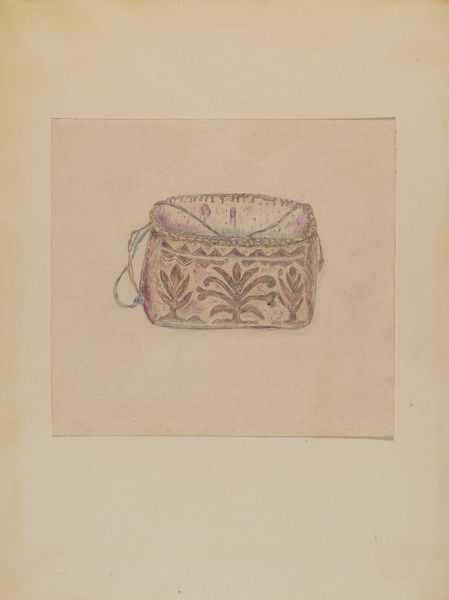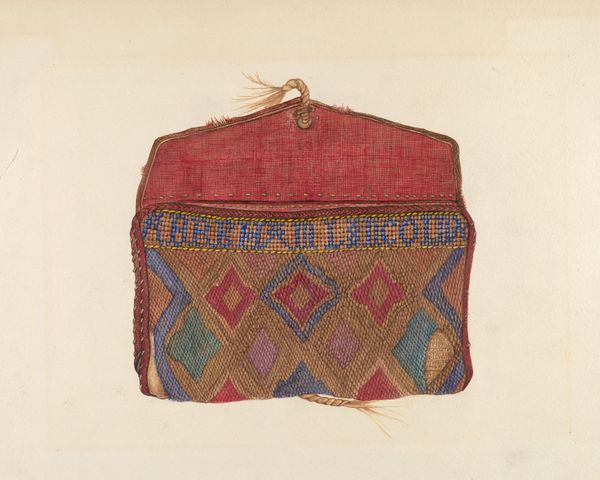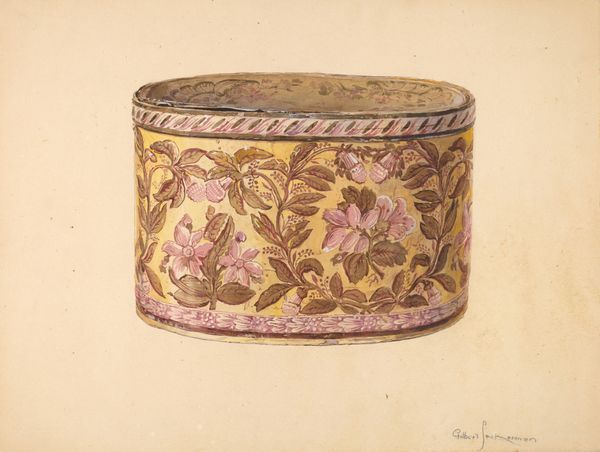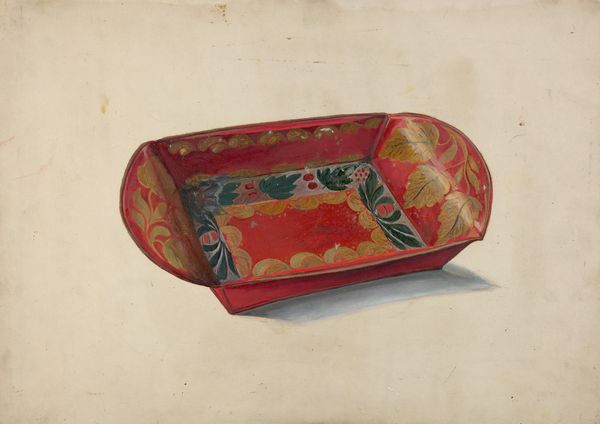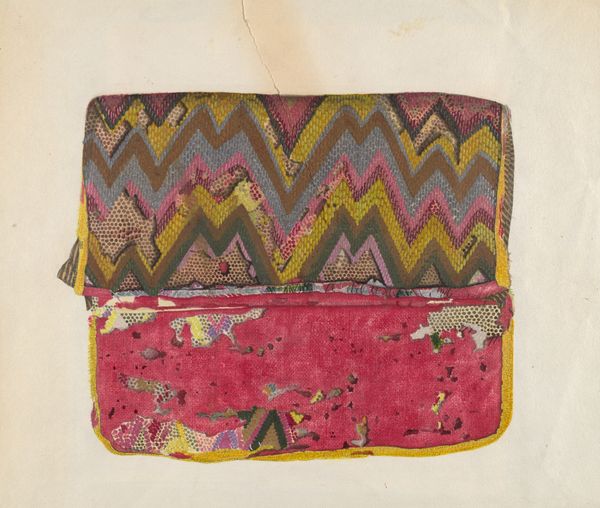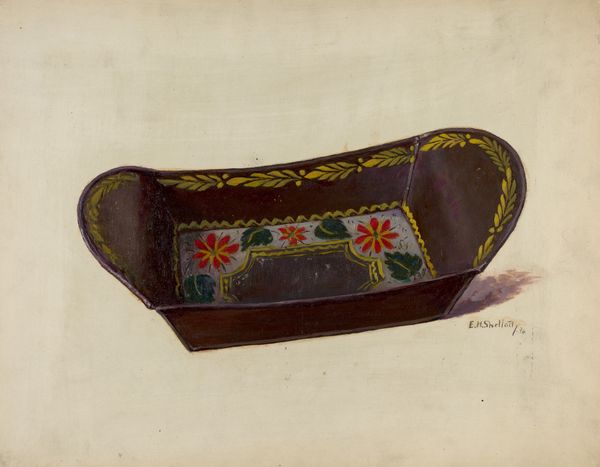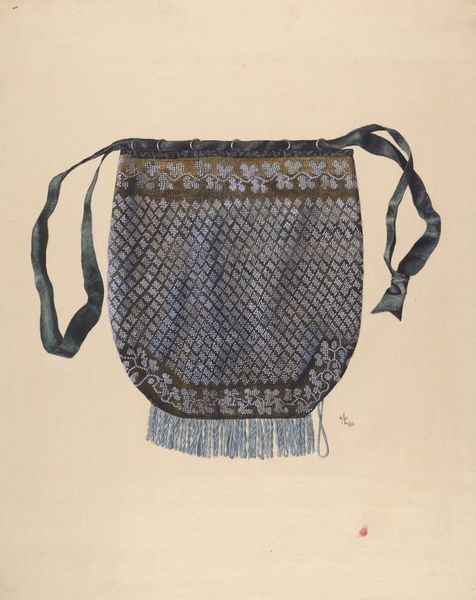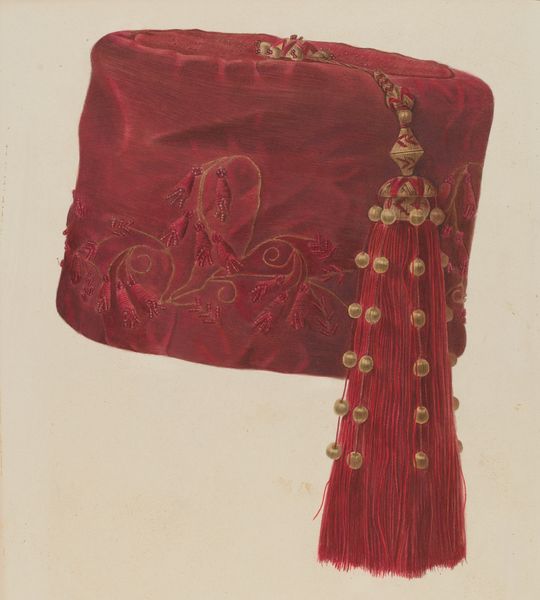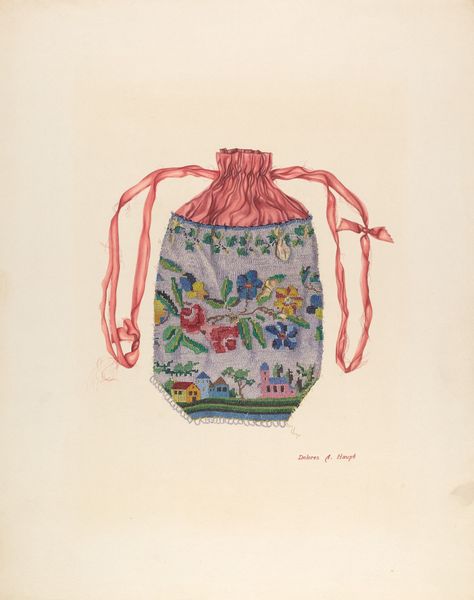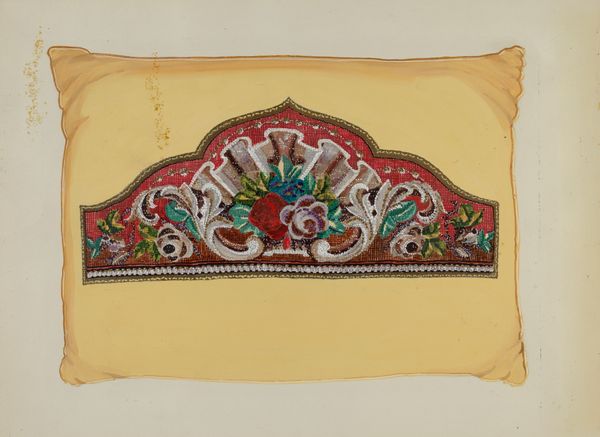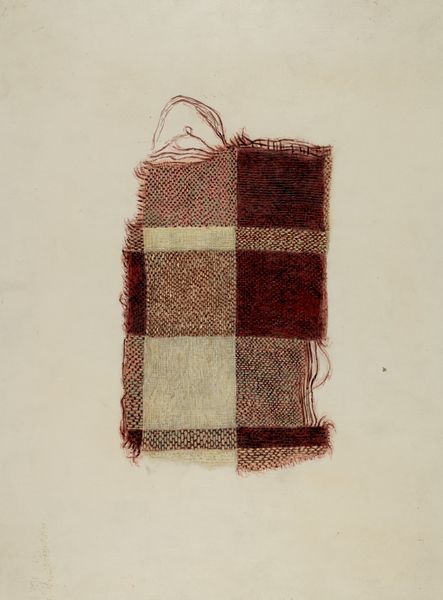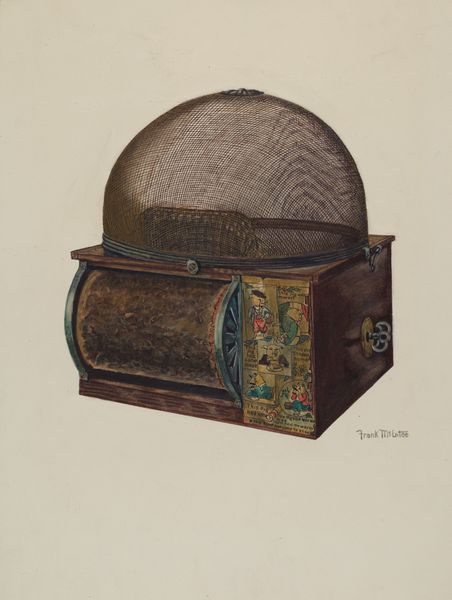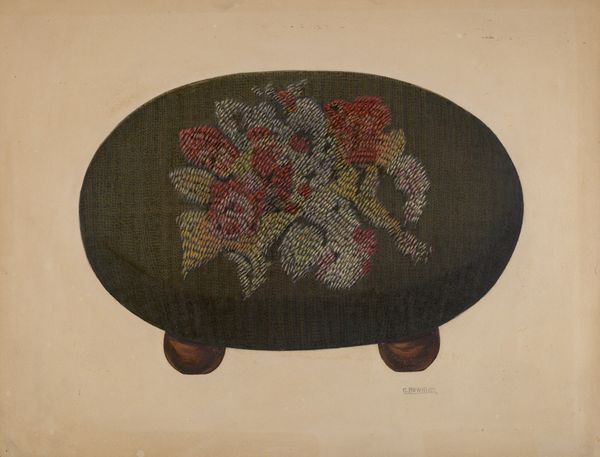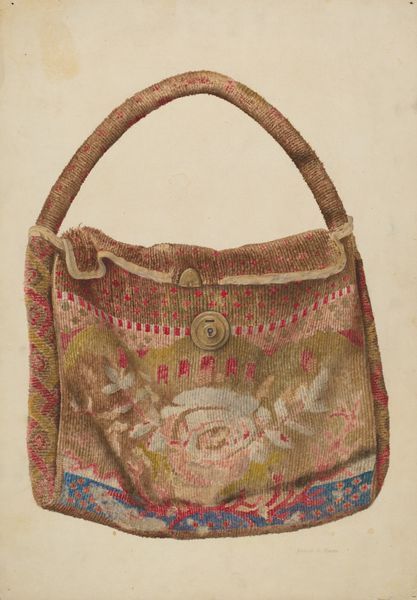
drawing, watercolor
#
drawing
#
oil painting
#
watercolor
#
watercolour illustration
#
watercolor
#
realism
Dimensions: overall: 24.7 x 35.2 cm (9 3/4 x 13 7/8 in.)
Copyright: National Gallery of Art: CC0 1.0
Curator: Welcome. Here we see John Cutting’s “Wool Pocketbook,” dating from around 1940, rendered in watercolor and drawing. It offers a fascinating glimpse into the everyday objects of the time. Editor: I'm struck by the precision, really. The texture of the wool, the delicate beadwork... It speaks of meticulous craft, doesn't it? There’s an almost tangible quality despite it being a watercolour. Curator: Indeed. Consider how items like these shaped identities in a society deeply rooted in gender roles. Who made this pocketbook, for whom, and within what socio-economic circumstances? Editor: That's key. Examining the labour invested here, particularly when craft was often gendered, highlights how these objects blur the lines between "art" and "craft". The use of wool specifically places it within textile production, right? Curator: Precisely. It evokes questions about value, utility, and status. Was it homemade, a symbol of thrift and domestic virtue, or purchased, signifying a different kind of social standing? Its materiality and the intricate designs hint at possible cultural influences and meanings embedded in its form. Editor: Absolutely. Look at the dark color. This hints at mass production and links this object to accessibility through consumption. The rise of department stores, where these kinds of ready-made goods became common. What narratives can be traced from its original material composition, design to function within that period's society? Curator: Precisely. Consider the interplay between the individual act of creation—should this be handcrafted—and the larger societal structures that dictated women’s roles. It serves as a mirror reflecting both constraint and creativity within prevailing social norms. Editor: Looking closer, I can start considering what impact technological progress and machine making has upon individual artisanship, particularly where feminine artisanship can exist to define artistic production beyond industrial advancements through new raw elements combined into inventive construction solutions. Curator: Agreed, viewing such works demands recognition of complex gender dynamics embedded within object design coupled directly to societal advancement as observed inside historical accounts, providing important details from a critical social lens! Editor: True; exploring processes behind production lets viewers perceive historical connections shaping cultural artifacts far beyond first impressions when engaging interactively beyond simplistic visuals only accessible upfront instead upon first arrival today here onsite!
Comments
No comments
Be the first to comment and join the conversation on the ultimate creative platform.
